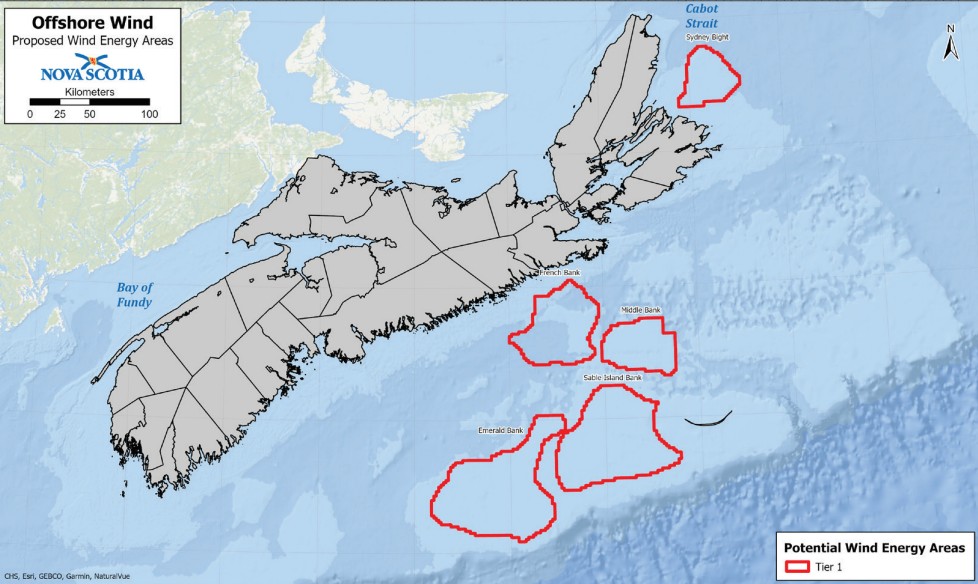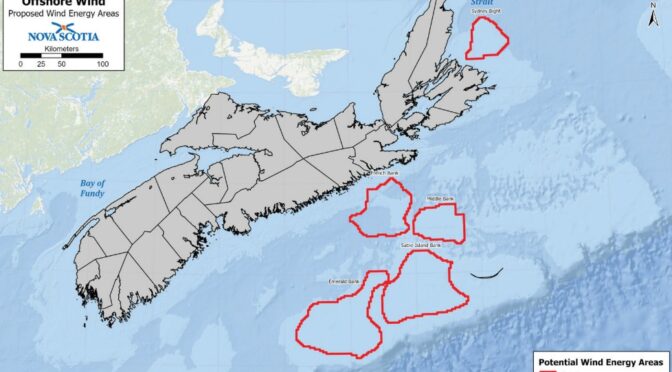Canada ramps offshore wind with five areas while Trump escalates US sector clampdown.
The provincial government has identified five offshore wind energy areas as part of its plan to expand renewable energy and secure long-term energy stability for the province.
The proposed sites – French Bank, Middle Bank, Sable Island Bank, Sydney Bight and Western/Emerald Bank – were shortlisted following a regional assessment conducted in collaboration with federal regulators. These areas, located in Atlantic waters off Nova Scotia’s coast, include zones to the south and southeast of Guysborough County, as well as northeast near Cape Breton.
“Identifying suitable areas for offshore wind farms is the next step to safely develop this new clean-energy industry that will create jobs and provide long-term energy security for Nova Scotia,” the province said in a statement.

Nova Scotians are invited to submit their comments on the proposed wind energy areas, which will be used by the federal and provincial governments to make the final decision on their designation. The Nova Scotia Department of Energy reported that comments will be accepted by April 14. The first call for tenders is planned for late 2025.
Four of the proposed wind energy areas are located off the east coast of Nova Scotia: French Bank, Middle Bank, Sable Island Bank, and Emerald Bank. The fifth, Sydney Bight, is located northeast of Cape Breton. The selected sites cover more than 19,500 km² of seabed.
“Nova Scotia is already developing its supply chain capacity to firmly position itself in the Canadian offshore wind market in the future,” the government stated.
Nova Scotia has set a goal of licensing up to 5 GW of offshore wind energy capacity by 2030. The province selected the five areas following the recommendations of a regional assessment committee, appointed in 2023, which identified eight areas with strong offshore wind potential.

